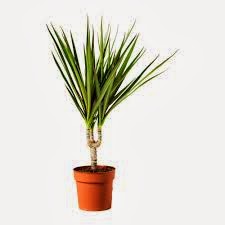This article was originally published in the newspaper in February. We are, in fact now very busy in the greenhouses.
Have your seed catalogues come in, yet? For me, the seed catalogues are harbingers of
spring joy, not of spring work. At our
place, all the seed orders have arrived, except for some backorders, and we are
(mentally) gearing up to go into the greenhouses next week.
Many years ago, BG (Before Greenhouse), I
used to start most of my plants in the house.
There are many reasons why folks might want to start plants in the
house: from saving money (???) to enjoying
the challenge. Here are some suggestions that might increase your likelihood of
success.
- What equipment will I need?
a.
Containers (clean) that have drainage holes: egg cartons, foil cake pans, recycled
greenhouse cells, margarine containers…
b.
Larger containers to transplant
into.
c.
Some kind of waterproof trays to hold the
planting containers.
d.
Good quality, sterile growing
medium (one brand name is Jiffy Mix).
e.
An artificial light source
whose height can be adjusted. Window
light is not usually sufficient to keep the seedlings short and stocky.
f.
Watering equipment.
- What conditions do seeds need to germinate? Assuming you have viable seeds, the following are required:
- The right temperature (this varies from plant to plant. Some require as low as 60˚F, some as high as 80-85˚F.)
- Light/dark: (some seeds will not germinate if covered, others will not germinate well if uncovered).
- Water: During germination, never let the surface dry out. The best way to keep the seedbed moist without washing out the seeds is frequent misting with a spray bottle.
- Time: of germination varies greatly. Vegetable seeds generally germinate fairly quickly, as do most annual flowers. Perennials can take weeks and even months to germinate.
- Where can I find out the above information? Some seed catalogues/seed packets provide adequate information. There are many good gardening books, for example, the Lois Hole series.
- What conditions do the seedlings need to survive and thrive?
- Direct light: this means that the light source (sun or artificial light) is shining directly on the seedlings for at least 8 hours (up to14 hours is better) per day. Fluorescents are better than incandescents since they give off less heat. The lights should be about 2-4 inches from the tops of the plants (hence the need to be height-adjustable). If the light is not right, the seedlings will stretch and develop long, skinny, weak stems.
- Water: Keep the soil moist, but not soggy. The surface may be dry, as long as the root zone is moist.
- Space: The first leaves do not look like true leaves. When the seedlings have developed some sets of true leaves, the plants should be transplanted into larger containers. Use 10-52-10 fertilizer after transplanting, according to package directions. This promotes root development. Overcrowded seedlings are at risk of disease or stunted growth. Depending on the plants, you might transplant more than once as bigger containers are needed.
- Mainenance fertilizer: When the transplants seem well-established, switch to 20-20-20 fertilizer, diluted. Overfertilizing results in salt—buildup in the soil.
- Hardening-off. Spring will finally arrive. The time will come when you will start thinking about putting the plants outside. They will need to be acclimatized to the stress of outdoor conditions: wind, sun and temperature. Bring them outside into a warm, sheltered spot for about an hour the first time. Avoid direct sunlight at first. Gradually increase the exposure for longer periods of time, and gradually ease into the sunlight.
- When should I start the seeds?
In the
greenhouse, we have a pretty tight planting schedule. These dates are critical for us, since we
need things to be at their peak, and blooming for sale. For many plants, we have two or three seeding
dates, so we can offer plants at their prime over the weeks of selling season.
My advice to the home gardener is, “ Don’t
start too early!”. There is a risk of long skinny plants that
may never be strong. Some seed packets
will tell you when to start (e.g. start
indoors 4-6 weeks before last frost).
And, if you do like I did one year—put your plants
outside, forget to bring them in, and freeze them all during the last frost of
the spring—then we’ll see you at the greenhouse.








